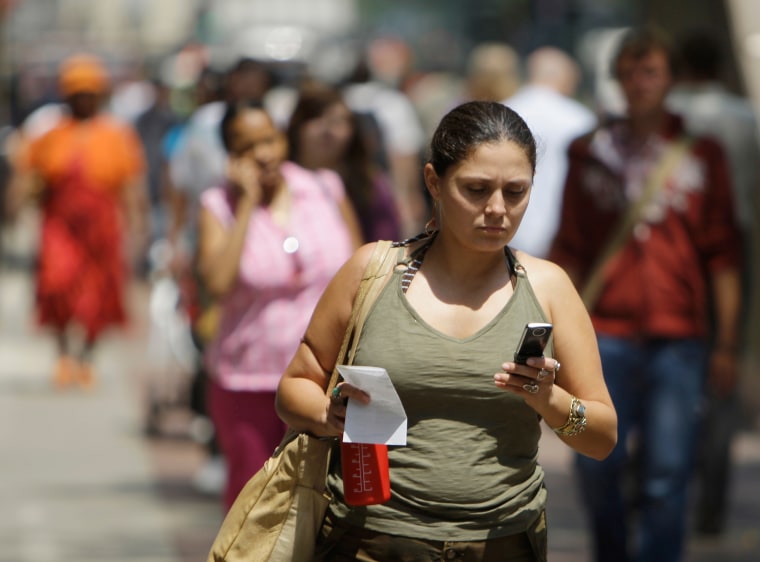Introducing a new rule: While you walk, put the phone away. A new study shows that walking while mindlessly tap-tap-tapping away on your phone actually changes your gait, causing you to move more slowly (which annoys everyone around you).
Texting also makes it harder to walk in a straight line, which, combined with the phone's powers of distraction, can be potentially dangerous.
“This could potentially be a problem in high risk environments, like walking near traffic or train tracks, where people think they are walking in a straight line but are actually wandering in a different direction,” lead author Siobhan Schabrun said in an email. YouTube is filled with evidence of this, like the Virginia man who fell off a subway platform last year because he was texting.
For this new study, published today in the journal PLOS One, Australian researchers filmed the movements of 26 young men as they walked about 27 feet. The men were asked to walk three times: once while reading texts, once while writing them, and once while just walking. When they texted while they walked, they had a harder time walking in a straight line, and they also tended to walk more slowly than when reading text messages or simply walking. Texting also caused them to walk "more like robots," Schabrun said: they hardly moved their arms, torso or head, in order to keep the phone steady in front of their eyes. That's a problem, Schabrun says, because a more rigid posture puts you at a greater risk of falling, especially for older people.
Texting-while-walking has to be among the most embarrassing reasons for a trip to the emergency room, but such injuries are increasing, recent figures show. In 2010, more than 1,500 pedestrians were treated in ERs for injuries related to using a cell phone while walking, according to a 2013 Ohio State University study, and that number has more than doubled since 2005. In the PLOS One study, 35 percent of the participants said they'd had some sort of trip, fall, or collision while walking and texting.
Much of this is down to the myth of multitasking. When people try to do two things at once—like texting and walking—they end up prioritizing one over the other. “In our participants, it seems people prioritized texting over walking compromising their posture and balance,” Schabrun said.
In another recent study, University of Washington researcher Dr. Beth Ebel staked out one of Seattle's busiest intersections to observe pedestrian behavior. She found almost one in three pedestrians were doing something other than paying attention, like listening to music. "And the folks who were paying the least attention to their environment were texting," Ebel says. She says that people who were texting were four times less likely to look up before they crossed the street, and they tended to spend more time in the intersection.
"I really have come to look at this as being sucked into the world of your phone," Ebel says. "They’re basically on autopilot. ... But when you’re crossing the street you can be killed. It’s a very high risk behavior.
"Just put the phone down," she says.
